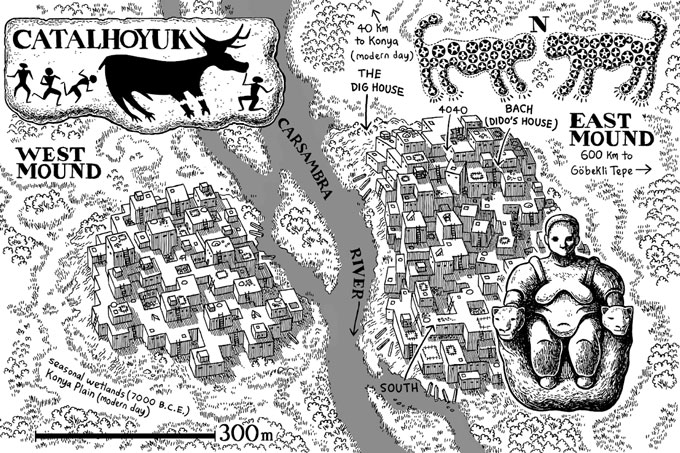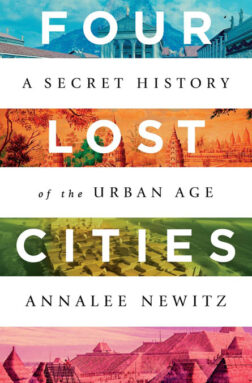This post was originally published on this site
Four Lost Cities
Annalee Newitz
W.W. Norton & Co., $26.95
It’s a familiar trope in movies and books: A bright-eyed protagonist moves to the big city in search of fame and fortune. Amid the bustle and lights, all hopes and dreams come true. But why do we cling to this cliché? In Four Lost Cities: A Secret History of the Urban Age, author Annalee Newitz explores ancient settlements to find out why people flock to big cities — and why they leave.
The book is divided into four enjoyable, snack-sized sections, one for each city. Each section is accompanied by a handy map, drawn by artist Jason Thompson with engaging, cartoon-style flair.
Rather than dry history, Newitz makes a special effort to highlight the oddities and innovations that made these cities unique. Take Çatalhöyük, the oldest city they feature, which thrived from 7500 to 5700 B.C. in what is now Turkey. This ancient city persisted for nearly 2,000 years despite lacking things that we might consider necessary to a city, such as roads, dedicated public spaces or shopping areas.

Newitz’s also explores Pompeii (700 B.C to A.D. 79 in modern-day Italy). When paired with Çatalhöyük, it offers insights into how humans developed the distinction between public and private spaces and activities — ideas that would not have made sense before humans began living in large settled groups. The section on Cahokia (A.D. 1050 to 1350) — located in what is now Illinois, across the Mississippi River from St. Louis — offers an unexpected reason for a city’s emergence. Many people link cities with capitalism and trade. Cahokia’s 30-meter-tall pyramids, 20-hectare plazas and a population (at the time) bigger than Paris suggest that spiritual revival can also build a major metropolis. Cahokia and Angkor, which reached its peak from A.D. 800 to 1431 in what is now Cambodia, also show how cities can form when power gets concentrated in a few influential people.
Through touring such diverse cities, Newitz shows that the move to urban life isn’t just a setup for a hero of a story. It’s a common setup for many ancient cultures.
Each city, of course, eventually fell. Çatalhöyük and Angkor suffered from droughts and flooding (SN: 10/17/18). Pompeii felt the fury of a volcano (SN: 1/23/20). But Newitz also reveals something else: Collapsing infrastructure provided the final push that kept people away. Here we glimpse our potential future, as climate crises and political instability threaten our own urban networks. But Newitz’s vivid imaginings, bright prose and boundless enthusiasm manage to keep the tone optimistic. These cities did end, yes. Yet the people who built them and resided in them lived on. Even in Pompeii, many inhabitants made it out. Collectively, they went to new places and spurred new growth.
Four Lost Cities is about how cities collapse. But it’s also about what makes a city succeed. It’s not glamour or Wall Street. It’s not good restaurants or big factories. It’s people and their infrastructure. It’s clean water, public spaces, decent roads and opportunities for residents to live with dignity and improve their lot, Newitz explains. And when infrastructure crumbles beyond repair, people inevitably move on. “Our forebears’ eroded palaces and villas warn us about how communities can go wrong,” they write. “But their streets and plazas testify to all the times we built something meaningful together.”
Buy Four Lost Cities from Bookshop.org. Science News is a Bookshop.org affiliate and will earn a comission on purchases made from links in this article.

